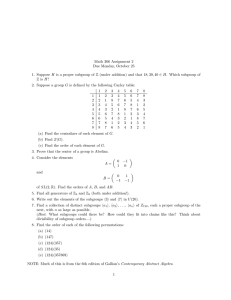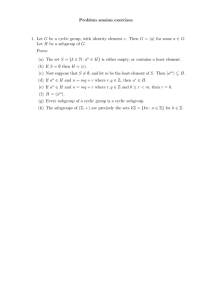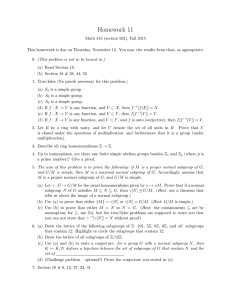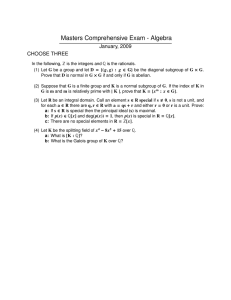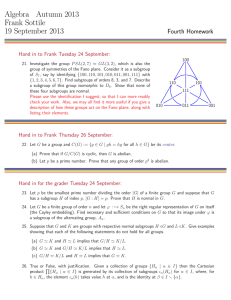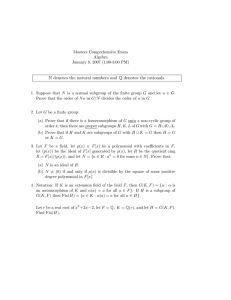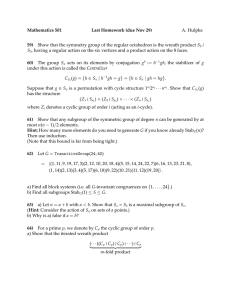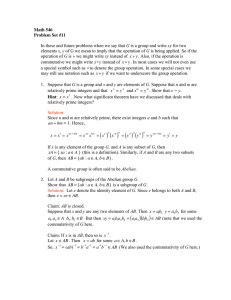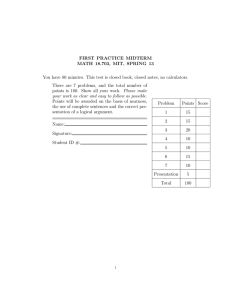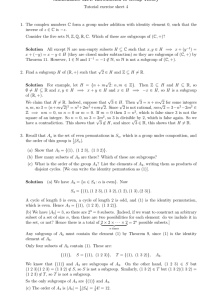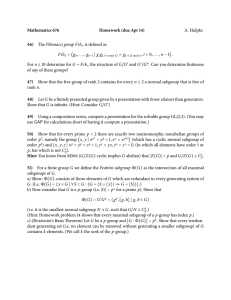Mathematics 1214: Introduction to Group Theory Tutorial exercise sheet 4
advertisement
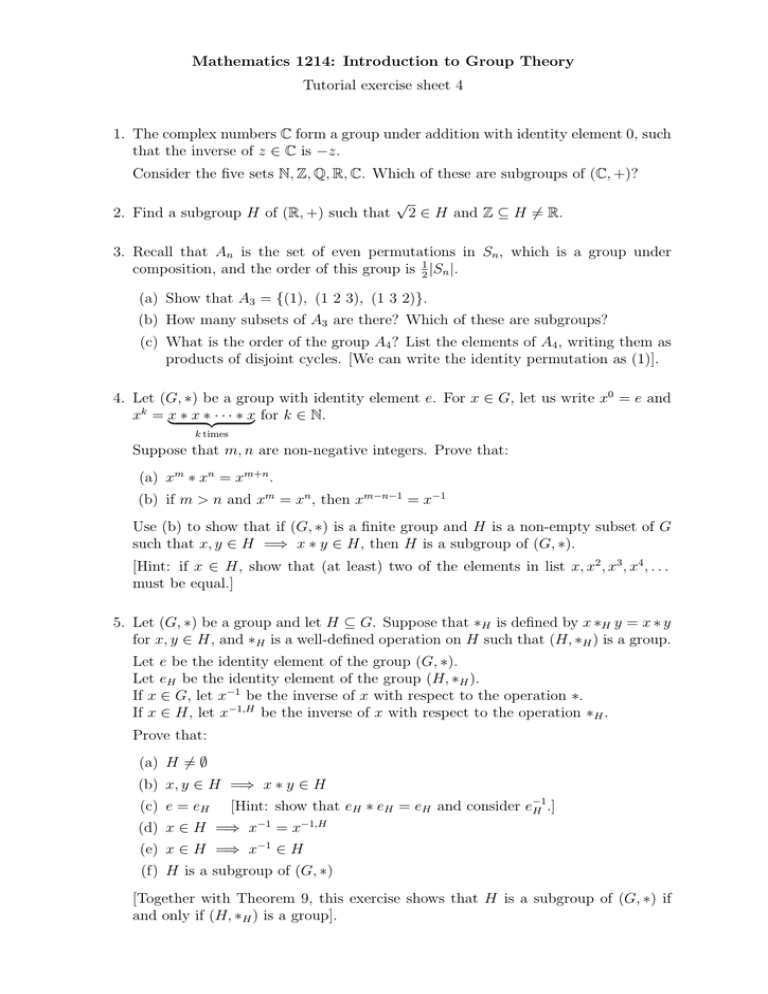
Mathematics 1214: Introduction to Group Theory
Tutorial exercise sheet 4
1. The complex numbers C form a group under addition with identity element 0, such
that the inverse of z ∈ C is −z.
Consider the five sets N, Z, Q, R, C. Which of these are subgroups of (C, +)?
2. Find a subgroup H of (R, +) such that
√
2 ∈ H and Z ⊆ H 6= R.
3. Recall that An is the set of even permutations in Sn , which is a group under
composition, and the order of this group is 21 |Sn |.
(a) Show that A3 = {(1), (1 2 3), (1 3 2)}.
(b) How many subsets of A3 are there? Which of these are subgroups?
(c) What is the order of the group A4 ? List the elements of A4 , writing them as
products of disjoint cycles. [We can write the identity permutation as (1)].
4. Let (G, ∗) be a group with identity element e. For x ∈ G, let us write x0 = e and
xk = |x ∗ x ∗{z· · · ∗ x} for k ∈ N.
k times
Suppose that m, n are non-negative integers. Prove that:
(a) xm ∗ xn = xm+n .
(b) if m > n and xm = xn , then xm−n−1 = x−1
Use (b) to show that if (G, ∗) is a finite group and H is a non-empty subset of G
such that x, y ∈ H =⇒ x ∗ y ∈ H, then H is a subgroup of (G, ∗).
[Hint: if x ∈ H, show that (at least) two of the elements in list x, x2 , x3 , x4 , . . .
must be equal.]
5. Let (G, ∗) be a group and let H ⊆ G. Suppose that ∗H is defined by x ∗H y = x ∗ y
for x, y ∈ H, and ∗H is a well-defined operation on H such that (H, ∗H ) is a group.
Let e be the identity element of the group (G, ∗).
Let eH be the identity element of the group (H, ∗H ).
If x ∈ G, let x−1 be the inverse of x with respect to the operation ∗.
If x ∈ H, let x−1,H be the inverse of x with respect to the operation ∗H .
Prove that:
(a) H 6= ∅
(b) x, y ∈ H =⇒ x ∗ y ∈ H
(c) e = eH
[Hint: show that eH ∗ eH = eH and consider e−1
H .]
(d) x ∈ H =⇒ x−1 = x−1,H
(e) x ∈ H =⇒ x−1 ∈ H
(f) H is a subgroup of (G, ∗)
[Together with Theorem 9, this exercise shows that H is a subgroup of (G, ∗) if
and only if (H, ∗H ) is a group].

